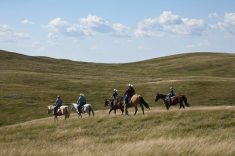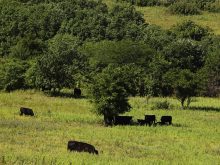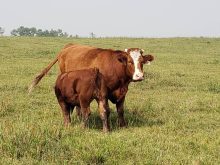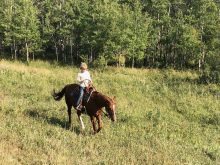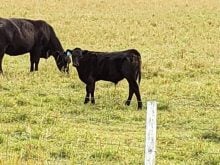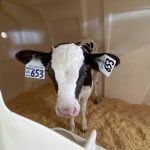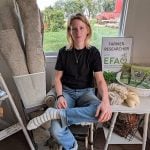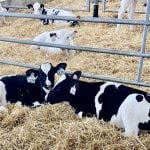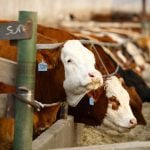Here are some of the key averages that showed up in the 2014 Western Canadian Cow-Calf Survey (WCCCS). The survey provides an opportunity for producers to see how their production practices compare with industry averages.
2013 Breeding season
- Average ratio cows to bulls — 24:1 (Heifers to bulls 17.5:1).
- Average breeding season length — 91 days (cows) 89 days (heifers).
- Producers who exposed heifers earlier than cows — 26 per cent.
- Average open rate — seven per cent (cows) 10 per cent (heifers).
2014 Calf crop
- Average length of calving season — 92 days (cows) 66 days (heifers).
- Most common month to start calving — April (followed by March and February).
- Producers with 60 per cent or more cows calving in first 21 days of season — 42 per cent.
- Calving ease — 96 per cent (unassisted cows), 84 per cent (unassisted heifers).
- Average calf death loss — 6.9 per cent.
- Causes of death — disease (30 per cent), predator/accident (29 per cent), weather (16 per cent), unknown (24 per cent).
Read Also

White House comments and larger supplies pressure cattle market
White House comments on increasing imports and larger supplies pressure the cattle market in North America, Jerry Klassen observes.
Weaning
- Most popular time to wean — November 1-15 (followed by October).
- Most popular weaning method — traditional separation.
- Average weight weaned per cow exposed — 534 lbs.
- Average weaning per cent — 85 per cent.
Weaned calf marketing
- Number of producers selling calves at weaning — 72 per cent.
- Number of producers backgrounding — 35 per cent.
- Number of producers retaining replacements — 79 per cent.
- Number of producers selling via live auction — 80 per cent.
Culling and death loss
- Average culling rate breeding females — 10.3 per cent.
- Main reasons for culling — reproduction (50 per cent), age (19 per cent) physical soundness (16 per cent), calf performance (five per cent).
- Average herdsire culling rate — 22.6 per cent.
- Main reasons for culling — physical soundness (32 per cent), age (27 per cent), reproduction (21 per cent), progeny performance (13 per cent).
- Average breeding female death loss — 1.4 per cent.
- Average breeding herdsire death loss — 2.4 per cent.
Reproductive management
- Number of producers using AI — 18 per cent.
- Number of producers using ES — 11.3 per cent.
- Number of producers pregnancy checking — 60 per cent (cows), 66 per cent (heifers).
- Average cow weight — 1,374 pounds (only 22 per cent provided actual scale weight).
- Number of producers using breeding soundness evaluation for bulls — 64 per cent.
- Top three bull selection criteria — breed, conformation, birth weight.
Calf management practices
- Average per cent herds with 90 per cent or more calves born polled — 69 per cent.
- Number of producers dehorning calves — 70 per cent.
- Most common time for dehorning — after birth (43 per cent), at spring processing (38 per cent).
- Most popular methods of dehorning — dehorning paste (40 per cent), debudder, hot iron (34 per cent).
- Number of producers using pain control when dehorning — nine per cent.
- Number of producers implanting calves in 2014 — 24 per cent.
- Most common timing for calf castration shortly after birth — 64 per cent, at spring processing or branding (30 per cent).
- Most common castration methods — elastrator (76 per cent), scalpel (22 per cent).
- Number of producers who use pain control during castration — 4.2 per cent.
Grazing and feeding management
- Number of producers who rotational graze — 67 per cent (native), 70 per cent (tame).
- Number of producers who continuous graze — 30 per cent (native), 19 per cent (tame).
- Pasture rejuvenation — every 11 or more years (38 per cent), never (33 per cent), every six to 10 years (25 per cent), every one to five years (3.4 per cent).
- Number of producers who lab-tested feed for quality — 47 per cent.
- Number of producers who sorted breeding females for winter feeding — (56 per cent), by age (84 per cent), by condition (67 per cent), by stage (26 per cent).
- Most common winter feeding methods (some use more than one) — bale feeders (67 per cent), bale processors (46 per cent), bale grazing (33 per cent), rolled-out forage (28 per cent), swath grazing (17 per cent), stockpile forage (18 per cent), crop residue (17 per cent).
Health management
- Number of producers who vaccinate — 91.4 per cent.
- Number of producers who inject in neck (recommended) — 91 per cent.




